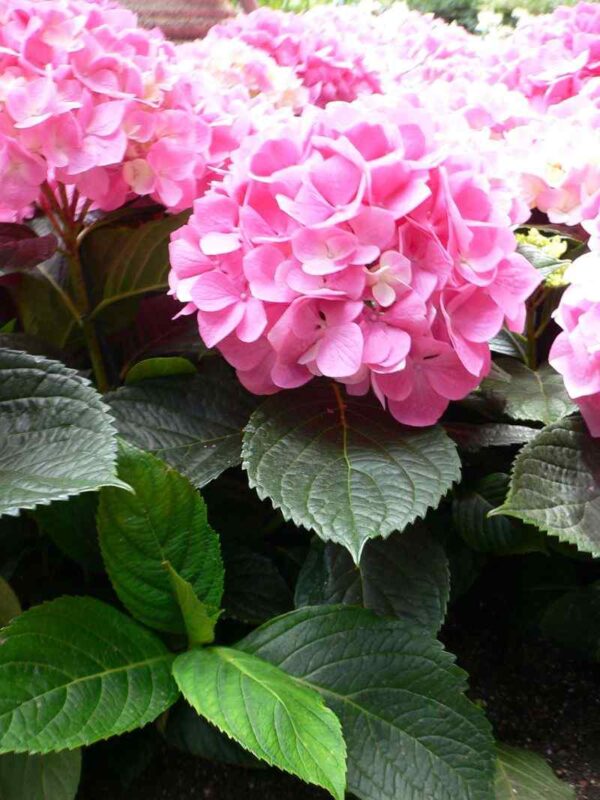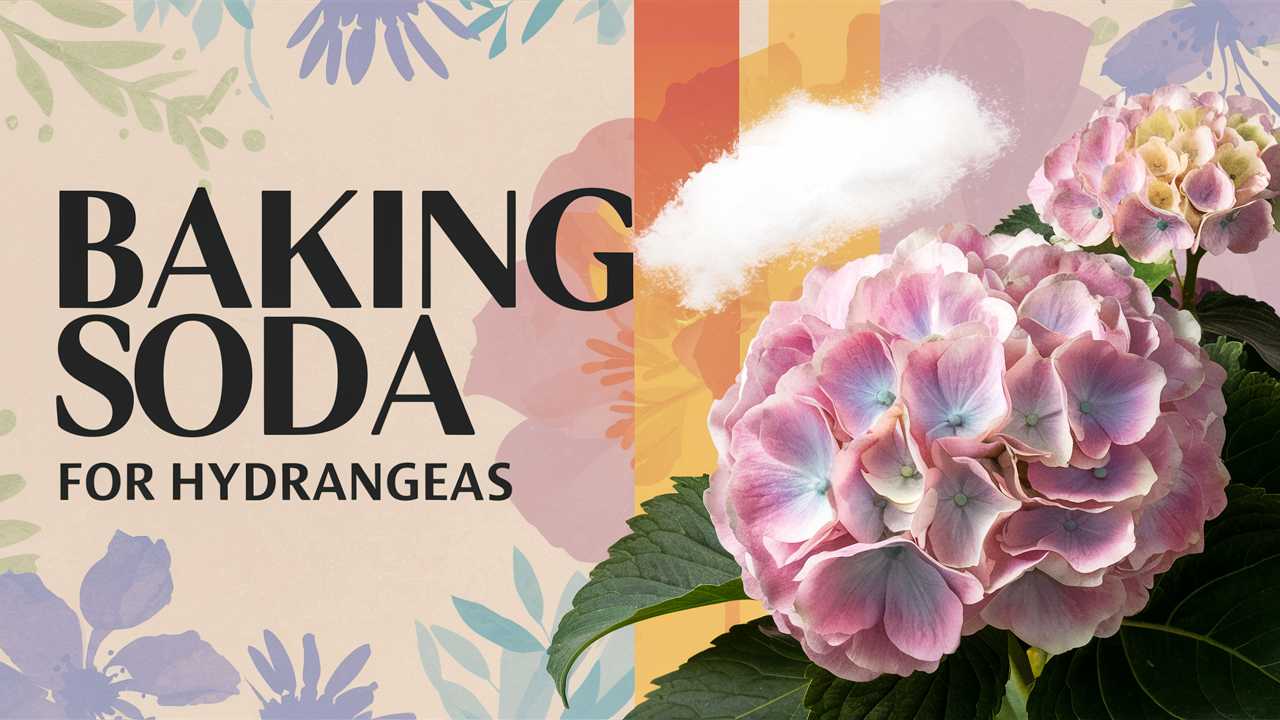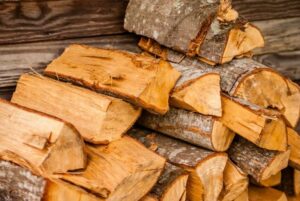In this post, we will explore the potential benefits of using baking soda for hydrangeas, how to apply it effectively, and debunk some myths surrounding these captivating flowers.
Is Baking Soda Good for Hydrangeas?

Baking soda, or sodium bicarbonate, is a household staple often found in kitchens, but its uses extend far beyond cooking and baking. When it comes to hydrangeas, baking soda can play a significant role in promoting healthier plants. Its alkaline nature can help balance the pH of the soil, which is particularly beneficial for certain varieties of hydrangeas that thrive in less acidic environments.
Hydrangeas are unique in their ability to change color depending on the soil pH. For example, the blue tones of macrophylla hydrangeas are often attributed to acidic soil, while pink and red hues emerge in alkaline conditions. By applying baking soda to your hydrangeas, you may be able to influence the soil’s pH levels slightly, potentially encouraging the desired color in your blooms.
Moreover, baking soda serves as a gentle fungicide. It can help combat powdery mildew and other fungal diseases that often afflict hydrangeas, especially in humid climates. This multifunctional ingredient offers a household solution for gardeners aiming to get the most out of their hydrangeas.
Will it Make my Hydrangeas Flowers Change Color?

Many hydrangea enthusiasts are entranced by the idea of changing the color of their blooms. The intriguing phenomenon of how soil pH affects hydrangea coloration has led many to wonder if baking soda can aid in this transformation. The short answer is yes, but with conditions.
The most affected species are mophead and lacecap hydrangeas, known for their ability to produce blue or pink flowers based on soil acidity. Adding baking soda to your hydrangea garden can increase alkalinity, potentially shifting the colors towards pink. Conversely, if your soil is already alkaline, your blooms might tilt towards the blue side.
However, it’s essential to note that baking soda is not a miracle solution for instant results. The effects of baking soda on flower color can take time to manifest. Regular monitoring of soil pH and gradual adjustments, instead of drastic changes, will yield the best color outcomes over time. Also, always remember that various factors, including the specific hydrangea variety, local soil conditions, and climate, can influence the final bloom color, so be patient and attentive to your plants as they grow.
How to Use Baking Soda to Grow Your Hydrangeas?

Understanding how to implement baking soda correctly can significantly enhance your hydrangeas’ health and vitality. Here’s a comprehensive guide on how to use this versatile ingredient effectively.
Good for the Roots
When baking soda is applied to the soil, it can create a beneficial environment for the roots. It helps to neutralize acidic soil, boosting the overall health of the root system. A healthy root system is crucial for water and nutrient absorption, which ultimately impacts plant health and growth.
Gives the Plant a Boost
Baking soda acts as a mild fertilizer by providing sodium, which, while often overlooked in plant nutrition, plays a role in the osmotic pressure of plants. In moderation, it can help increase the overall vigor of your hydrangeas, encouraging lush foliage growth and abundant blooms.
Reduces Fungal Disease
One of the most important aspects of gardening is maintaining plant health and preventing diseases. Utilizing a baking soda solution can help minimize incidences of powdery mildew and other fungal diseases on hydrangeas. The alkaline nature of baking soda creates an inhospitable environment for these pathogens, thereby offering a natural remedy for disease prevention without resorting to harsh chemicals.
Mixing with Water
Simple and effective, one way to use baking soda for hydrangeas is to create a water solution. Combine one tablespoon of baking soda in a gallon of water and use it to water your hydrangeas. This method allows for a more uniform distribution of baking soda across the soil and ensures that the roots receive the necessary nutrients without overwhelming them. Applying this mixture every few weeks during the growing season is ideal for maintaining a balanced environment.
Mixing with Soil
For a more direct approach, you can mix baking soda directly into the soil around your hydrangeas. This method can be particularly useful when planting new hydrangeas. Make sure to blend it thoroughly with the soil to avoid any localized high concentrations that could lead to imbalances. As always, aim for moderation!
Using as a Fertilizer
While baking soda is not a complete fertilizer, it can complement your regular fertilization routine. Combine it with your standard fertilizer to enhance its efficacy. Particularly if you want to adjust the pH of your soil, using baking soda alongside other organic fertilizers can create a holistic approach to hydrangea care that promotes blooming and growth.
Other Supplementary Ingredients
To maximize the health of your hydrangeas, consider these supplementary ingredients alongside baking soda to create a nurturing environment:
Lemon Juice
In contrast to baking soda, lemon juice can lower soil pH due to its acidity. If your soil has become too alkaline from excessive baking soda or just by nature, introducing lemon juice can help restore balance. Be aware of the proportions to maintain an ideal pH for the specific type of hydrangeas you are growing.
Vinegar
Similar to lemon juice, vinegar is another acidic addition that can lower soil pH. Use it sparingly, as its potent acidity can quickly alter soil conditions. A diluted mixture of vinegar and water can serve as a temporary fix if your hydrangeas are leaning towards the alkaline spectrum.
Coffee Grounds
Coffee grounds are an excellent source of nitrogen and can slightly acidify the soil. When mixed with baking soda, they can create a rich soil amendment that supports healthy growth. The nitrogen promotes leafy development, while the baking soda balances pH levels effectively.
Nails
Another fascinating tactic is to bury nails or other ferrous objects in the soil around your hydrangeas. Iron is a critical nutrient for many plants, including hydrangeas, and will contribute to the blue hues in blooms when the soil acidity is sufficiently low. This method is more of a slow-release strategy but can yield wonderful long-term results.
Special Plant Food
Consider using specially formulated plant food designed for hydrangeas. These foods often contain the right micronutrients that boost growth rates and color vibrancy. Combining commercial plant food with your baking soda solution can effectively nourish your hydrangeas.
A Word About Overwatering Hydrangeas

While baking soda can significantly improve your hydrangeas’ conditions, it’s important to remember that these plants have specific water needs. Overwatering hydrangeas can lead to root rot, fungal diseases, and stunted growth.
Ensure your soil has adequate drainage and that you are watering appropriately based on the weather and season. In general, hydrangeas like their soil to be consistently moist but not saturated. It’s often better to water deeply but infrequently rather than to water lightly every day. Using mulch can also help retain moisture in the soil and regulate temperature, benefiting overall plant health.
Myths about Changing Colors

As intriguing as the color-changing abilities of hydrangeas may be, a few misconceptions often cloud the understanding of this phenomenon. One significant myth is that adding baking soda or any other additive will instantly transform your hydrangea blooms from blue to pink or vice versa. In reality, these color changes are gradual and depend on various factors, as outlined above.
Another common myth is that all hydrangeas can change color universally. It’s crucial to recognize that not all hydrangea varieties possess this property. While mophead and lacecap varieties are famous for their color-changing capabilities, others, like oakleaf hydrangeas, do not change significantly based on soil pH.
Finally, some gardeners believe that changing colors is solely dependent on the introduction of additives like baking soda or vinegar. In truth, the existing soil conditions, climate, and the specific type of hydrangea play pivotal roles in determining the ultimate bloom color. Appreciating your hydrangeas’ natural characteristics can lead to a more fulfilling gardening experience.
Final Thoughts: How to Use Baking Soda to Grow Hydrangeas
In conclusion, baking soda can be a valuable asset in your hydrangea-growing toolkit, providing benefits ranging from soil pH adjustment to fungal disease prevention. Here’s a recap of how to best utilize it:
Good for the Roots: Enhances root health and nutrient absorption.
Gives the Plant a Boost: Offers mild nourishing properties that enhance vigor.
Reduces Fungal Disease: Serves as a natural fungicide to protect against pathogens.
Mixing Techniques: Utilize water mixtures or soil amendments for even application.
Supplementary Ingredients: Explore other natural remedies like lemon juice and coffee grounds to create a balanced growing environment.





